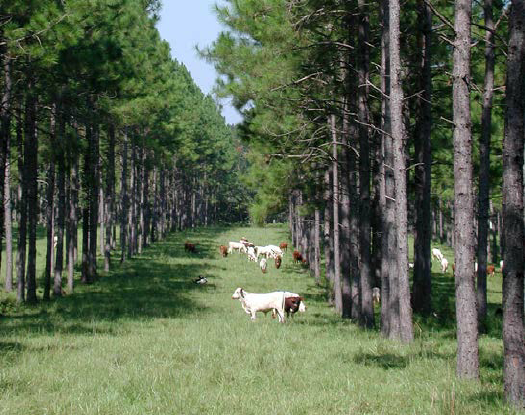
So you’ve decided to invest in a silvopasture to complement your grazing operation. But perhaps you’re still wondering: Can this type of forestry-grazing system really pay off for my farm? What are the benefits? Are there drawbacks we should know about? It seems like there are as many opinions on this topic as there are people giving them. Some see it as a way to improve the sustainability of their livestock operation while others see it as an unnecessary expense that could potentially put their grazing business at risk. This article will help you understand what a silvopasture is, if it’s right for your operation and if so, how you can get started.
What Is Silvopasture?
Silvopasture is when you use a combination of trees and livestock on the same piece of land. In other words, you have trees and pasture on the same piece of land. There are several approaches to silvopasture: Shrubby woodland – This system generally consists of shrubs that are between 1 and 6 feet tall. They’re often referred to as “living fences” because they offer livestock confinement and protection from predators. This system is one of the easiest to develop, especially if you’re starting with pasture that’s already in poor shape. Semi-mature woodland – A mix of trees that are 3 – 8 feet tall that generally consist of hardwood species like oaks and hickory. These trees can provide shade and a place for livestock to rest. They can be used to create a type of “shrubby fence” where livestock are confined to an area of the pasture by the trees. Full-fledged mature woodland – A forest where trees are 8-35 feet tall. This system is designed to produce trees for timber and fiber, as well as create a wildlife habitat.
Why Is Silvopasture Good For Your Farm?
There are several benefits to adding silvopasture to your grazing operation. Improve Soil Health – A healthy pasture will feed your livestock better, which can result in a better-quality product for market. Healthy soils also help to prevent erosion, improve water quality and increase carbon sequestration, a process by which soils can store carbon and help to reduce greenhouse gas emissions. Silvopasture can help improve soil health by encouraging better soil biology, improving soil chemistry (i.e. pH, soil minerals and salt content) and increasing organic matter. Improve Water Quality – As pastureland can be especially susceptible to run-off during rain events, silvopasture can help reduce the amount of fertilizer and soil that ends up in waterways. Silvopasture can also help to reduce livestock impact on streams and rivers by moving grazing to less vulnerable times of the year, like the fall and winter when there’s less rain and snow melt.
How Does A Silvopasture Benefit The Environment?
As stated above, a silvopasture can help improve soil health, water quality and grazing management, all while providing wildlife habitat. To do so, silvopasture systems are often managed by rotational grazing where livestock are moved to a new part of the pasture when they’ve eaten everything in their current grazing area. By managing your pasture by grazing, you can reduce the amount of fertilizer and other inputs necessary to keep it healthy.
Managing Pastures By Rotational Grazing
Pastures in a silvopasture system are often managed by rotational grazing. This grazing method can be applied to both silvopasture and monoculture grazing, but is a more natural approach to grazing than the traditional “set-stocking pattern”. It’s based on the premise that soil and plants have a certain amount of time needed to regenerate and be ready to be grazed again. You can start to see the potential benefits of grazing management by measuring the quality of your soil and pasture. It’s called soil health because it’s not only about how much soil there is, but also the quality of that soil. Soil that’s high in organic matter and has good structure is healthier and can be more productive. If soil is low in organic matter and has poor structure, it’s difficult for plants to grow well.
Managing Trees By Silviculture
Trees are a critical component of any silvopasture system. In fact, they can even be used as a barrier to prevent livestock from entering certain areas of the pasture. Trees can also provide shade, which is important in hot, dry weather. Silviculture is the practice of growing trees for profit. There are many types of trees that can be grown for profit, including timber, fiber, fruit and nut trees. Silvopasture can be used to grow trees for any or all of these purposes.
Managing Everything Together: The Mixing Zones
Once you’ve established a silvopasture, you’ll need to manage it by creating grazing mixes that include trees and pasture species. A good mix will have species that are at different stages of growth, as well as provide a variety of forage types. You can use the mixing zone technique to create species mixtures that provide benefits to both livestock and trees. Mixing zones can be used to create smaller grazing areas or larger blocks of pasture that contain a mixture of tree and non-tree species.
Bottom line
Silvopasture is a smart way to use land that might otherwise be too difficult to cultivate or too steep to farm. By including trees in your grazing operation, you can create a more well-rounded system that provides multiple benefits. Silvopasture is good for your farm because it improves soil health, water quality and grazing management, while providing wildlife habitat and timber.




